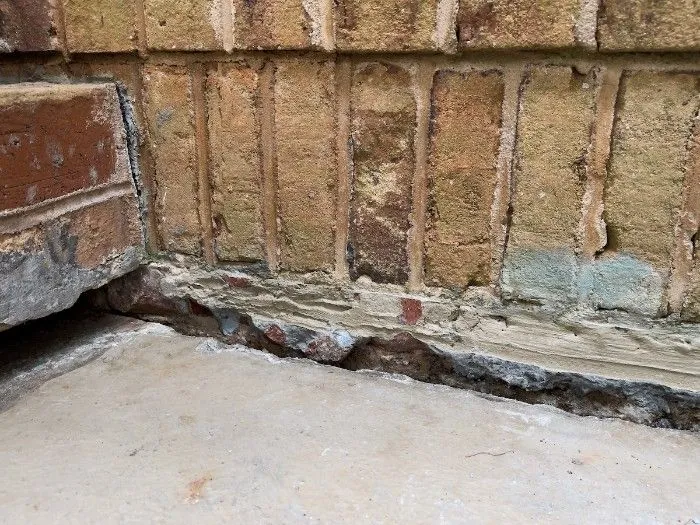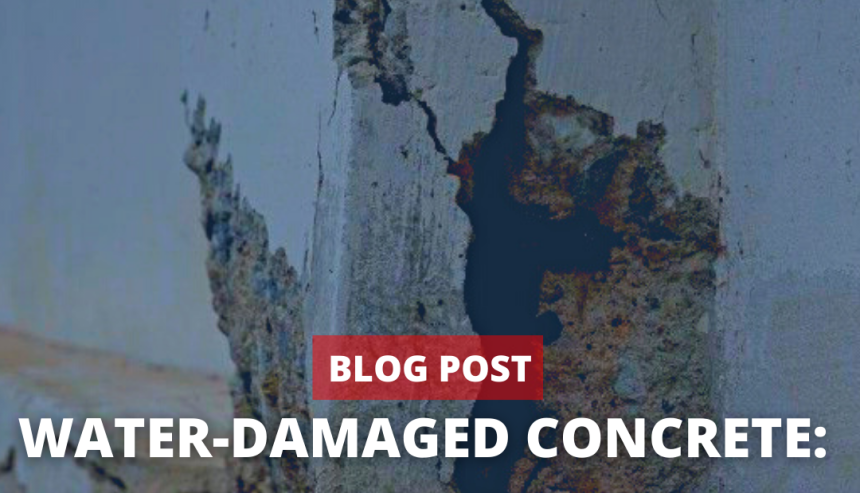In this article:
- Potential Causes of Water Damage to Concrete
- How to Identify If Cement is Wet
- How to Deal With Wet Concrete
- How to Repair Damaged Concrete
- If You Are Experiencing Water Damage Contact the PuroClean of Melbourne Pros
Seeing some water on your concrete floor might seem like a trivial matter. You might even dismiss the sight, thinking it will dry and not cause a problem. However, you may be surprised to learn that water-damaged concrete can be one of the most devastating problems a homeowner or business owner can face. Not only is it unsightly, but it can also cause structural issues and mold growth if not addressed properly.
In this article, we’ll examine how significantly concrete can be damaged by water and what you can do to repair it in Cocoa, Palm Bay, Melbourne, Rockledge, Sebastian, Titusville, Malabar, Grant-Valkaria, Cocoa Beach, Indialantic, Indian Harbour Beach, Flora Beach, Melbourne, Florida.
Potential Causes of Water Damage to Concrete
Several elements can cause water damage to concrete. The most frequent culprit is a lack of proper waterproofing, which can affect the structural integrity of the surrounding concrete, causing water damage to any existing concrete.
Tree root growth and seismic soil movement can contribute to water-related damage in concrete structures. Settlement cracks can lead to water entering the dense material, affecting its integrity and causing it to degrade over time.
Plumbing leaks can also cause major damage to a concrete foundation. Leaking pipes left unchecked can weaken the integrity of the surrounding concrete over time, eventually leading to a cracked and crumbling surface.
Pooling water from a plumbing leak may seep into the pores of the concrete, creating further erosion over time and resulting in an uneven floor.
In addition, concrete flooring is more likely to have residual water damage due to its porous nature. This issue is common in basements and crawl spaces, which are often built from a concrete foundation.
Water damage to concrete significantly impacts the strength of the material. When too much water enters the concrete grains, it causes them to spread apart and develop cracks, thus creating more space between them. Even after the water dries, these gaps remain and are filled with air, which lessens the durability of the concrete.
It’s also common for mold spores to grow within the cement, as a dark and moist crack can provide a perfect breeding ground for spores to grow and spread.
Many homes are built on concrete foundations, and a combination of these things can lead to a dangerous living scenario. Homeowners should take preventative measures by ensuring their homes are waterproofed to reduce and prevent further water damage to concrete.

How to Identify If Cement is Wet
A visual inspection is one of the most basic ways of telling if the concrete is wet or dry. You can do this by looking at the surface of the concrete: if it’s relatively glossy and has a sheen, it’s likely wet.
If it’s dry, you’ll be able to tell because it will appear duller and lighter in color. Another way to check is by testing its firmness. Try pressing your finger into the concrete and seeing how easily it pierces through. If it’s still too firm, then it’s likely still wet.

For more accurate results, consider purchasing a moisture meter. These meters measure the amount of moisture in materials like wood and cement.
Insert two pins into your material and read the percentage value displayed on the screen; anything above 10 percent indicates moisture in your material. Remember that different types of meters have different thresholds, so ensure you get one that meets your needs accordingly.
How to Deal With Wet Concrete
The first step to addressing water damage to concrete is to identify the source of the problem. It could be a leaking roof, plumbing issue, or flooding from a nearby river or lake.
Once you have identified the source of the water damage, it’s essential to take steps to stop it from happening again. If the source is a leaking roof, you’ll need to make repairs or replace the roof altogether. You can contact a professional plumber to find and fix the plumbing issues.
In the event of a flood caused by heavy rain or any other natural disaster, you might need to contact a property restoration company like PuroClean of Melbourne to remove standing water and check the moisture levels. A restoration company might also be able to inform you of any potential mold issues since water damage within concrete can lead to excessive mold growth.

How to Repair Damaged Concrete
After identifying and fixing the source of water damage, you’ll need to repair the concrete itself. Depending on the severity of the damage, you may need to patch or replace the concrete. If you decide to fix the work, consider wearing personal protective equipment (PPE) since it can get messy.
Patching is usually used for minor cracks and holes, while a complete replacement of the concrete might be necessary if it’s crumbling or flaking away. You’ll also want to consider sealing your concrete after repairs to protect it from future water damage.
The first step in repairing wet concrete is to clean the area. Make sure that you remove any dirt or debris and standing water that may be present. If there are any large pieces of debris, such as stones or rocks, you should use a shovel or brush to remove them.
Once all the debris has been removed, you may use a garden hose to rinse any remaining dirt or dust particles. Allow the area time to dry completely before proceeding.
Once the area has been cleaned and dried, use a putty knife or trowel to scrape any loose concrete slabs from the affected area. Once all flexible material has been removed, you may use a wire brush or grinder to smooth out any bumps or imperfections on the surface.

Mix your mortar according to manufacturer instructions and apply it liberally over the affected area using a trowel or putty knife. Work in small sections so that your mortar does not dry before you have had a chance to spread it evenly over your work surface. Then allow your mortar mix to dry and cure for 24-48 hours.
After any concrete foundation has been repaired and sealed, it’s important to inspect the area regularly for signs of any further damage. If you find any leaks or pooling of water, address them immediately before more extensive damage can occur. Regular maintenance and proper care ensure your concrete remains safe and sound for years.
If You Are Experiencing Water Damage, Contact the PuroClean of Melbourne Pros
Water damage can be a devastating experience, so it’s important to have the assistance of reliable professionals to help remediate your property. At PuroClean of Melbourne, we understand that the ordeal can be overwhelming, so we will work with you quickly and efficiently to restore any water damage. Our certified technicians are dedicated and experienced in providing top-notch customer service with the latest advancements in technology-based solutions and services. PuroClean of Melbourne goes above and beyond to ensure our clients receive excellent care, so don’t hesitate. Please contact us at (321) 378-2400. or visit our website.




 PuroClean of Melbourne
PuroClean of Melbourne